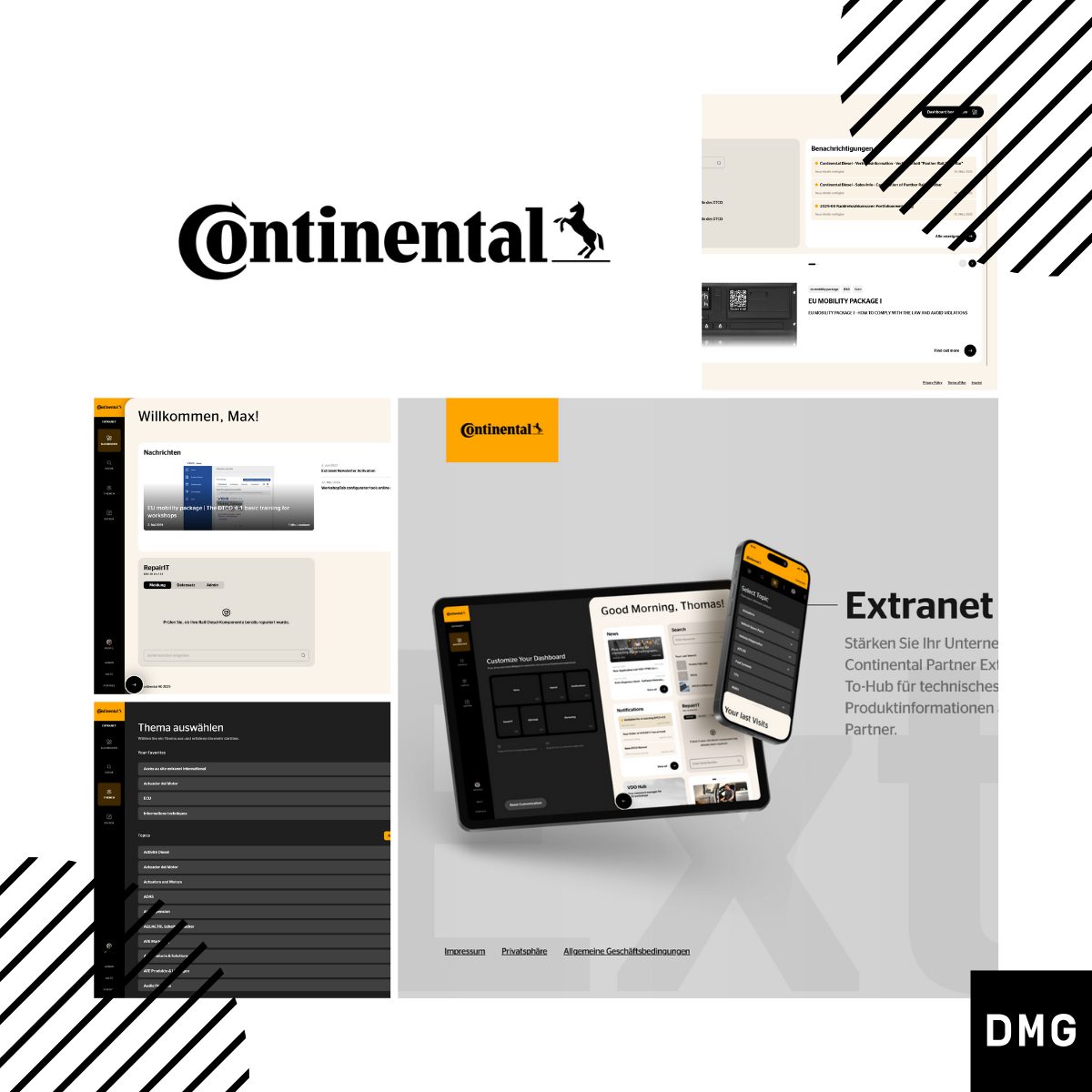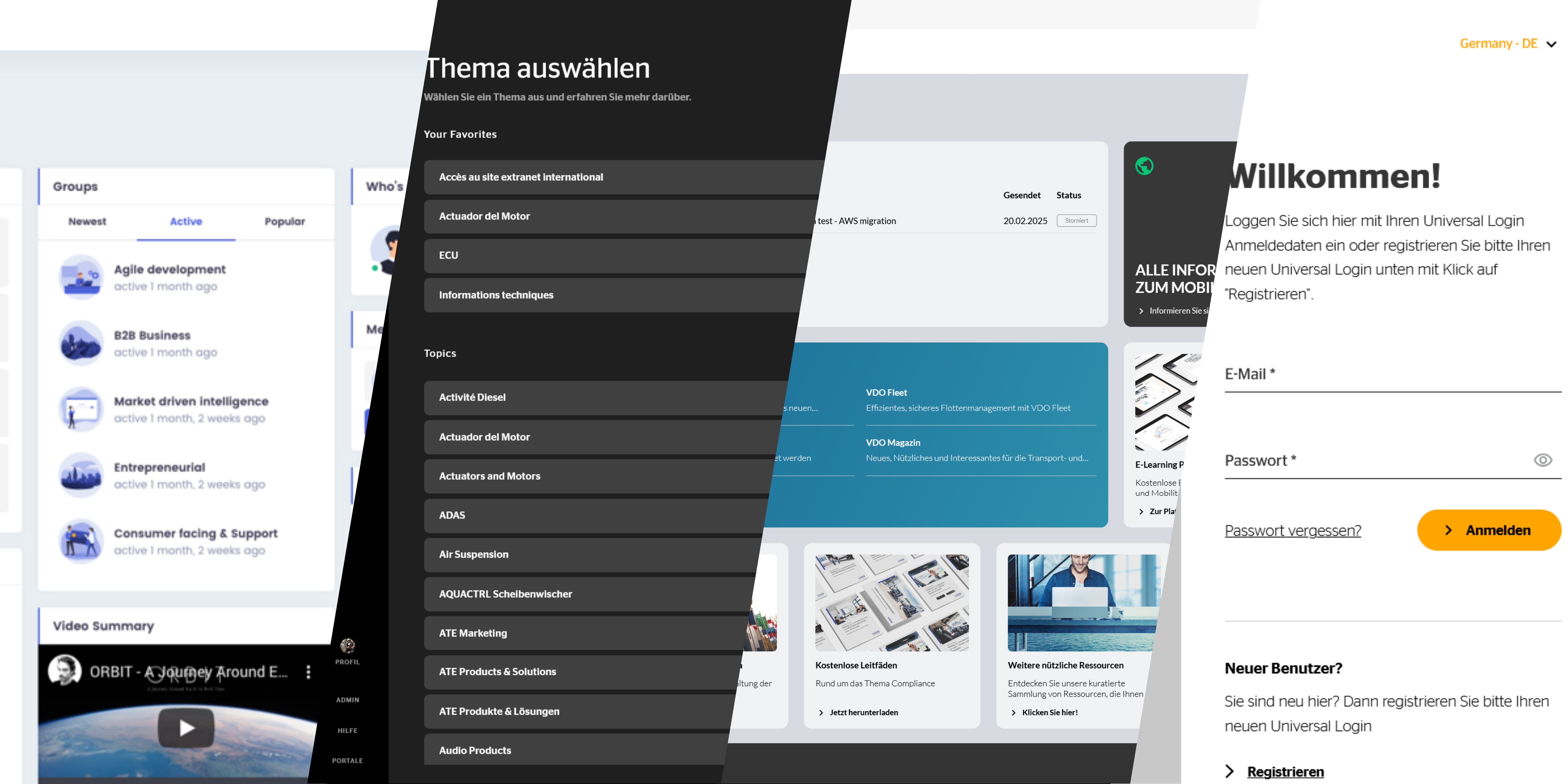Customer portals platform comparison – modular system, platform or individual development?

The pressure to digitize is increasing – not just perceived, but measurable: according to a recent IDC study, over 75% of B2B customers expect digital self-service offerings as standard. At the same time, 68% of companies state that their customer portal does not meet today’s requirements in terms of user-friendliness, integration or scalability.
One thing is clear: a customer portal is no longer just a service channel. It is the central interface between companies and customers – and often the first digital point of contact ever. This makes it all the more important to set the right course when choosing the technological foundation.
But this is where it gets exciting – and complicated. The market offers numerous options: from lean modular systems and flexible platform solutions to fully customized development. Each of these variants has advantages and disadvantages – and does not automatically suit every company or project.
Our experience shows: If you only focus on short-term project goals when setting up a customer portal, you risk high costs, inflexible architectures and dissatisfied users in the long term. It is therefore crucial to think strategically – and to choose the technological basis in such a way that it will still be viable tomorrow.
This article provides you with a structured overview of common solutions, clear decision-making criteria and practical recommendations. So that you get exactly the customer portal that suits your organization, your processes and your goals.
Three ways to the customer portal – an overview
Not every company needs the same solution – and this is especially true for customer portals. The way you build your portal has a direct impact on time-to-market, flexibility, user experience and future scaling. Essentially, there are three established approaches that you should weigh up strategically


Modular systems – fast and standardized
End customers expect simple, intuitive self-service functions, personalized offers and maximum availability – around the clock, on any device. It’s all about user experience, trust and efficiency. Whether contract management, service requests or loyalty programs: Success depends on how seamless and pleasant the digital contact is.
Platform-based solutions – flexible and future-proof
With platform solutions such as Liferay, Microsoft Platform, Salesforce Experience Cloud or comparable systems, you are opting for a solid technological basis with a high degree of flexibility. You can expand functions and UI on a modular basis, integrate third-party systems and adapt the portal specifically to your target groups – without having to start from scratch.
This option offers a balanced middle ground between speed, adaptability and technical control. The platform strategy is often the sweet spot, especially for companies with mature system landscapes and clear scaling objectives.


Individual development – maximally adapted, maximally autonomous
If your business model, your UX requirements or your system landscape are particularly specific, a custom-developed portal may be the right choice. This is built from the ground up – precisely according to your processes, roles, CI specifications and security requirements.
This means maximum control, but also greater complexity in implementation and operation. This solution is particularly suitable for companies with strong IT expertise, a clear digital strategy and a long-term investment horizon.
A direct comparison – modular system, platform or individual development?
|
Criterion |
Modular system (SaaS / low-code) |
Platform solution (e.g. Liferay, Salesforce) |
Individual development (custom code) |
|---|---|---|---|
|
Time-to-market |
Very quickly – often in just a few weeks |
Medium – standardized modules enable a quick start |
Slow – longer project duration due to complete setup |
|
Initial costs |
Low – favorable entry |
Medium – depending on license model & scope |
High – individual design and development required |
|
Operating costs |
Monthly license fees, little maintenance |
License + maintenance/hosting, good planning capability |
Higher – own operation or DevOps necessary |
|
Flexibility |
Restricted – predefined modules |
High – modularly expandable, good API strategy |
Maximum – complete freedom in design & function |
|
Scalability |
Limited – quickly limited in complex scenarios |
Very good – also international or multi-client capable |
Very good – full control over architecture |
|
Depth of integration |
Low to medium – depending on the provider |
High – many platforms come with ready-made connectors |
Maximum – fully adaptable to existing system landscape |
|
Security & Compliance |
Limited controllability (depending on provider) |
High – Enterprise functionality (SSO, roles, GDPR) |
Maximum – full control over hosting, security & access |
|
UX & CI customization |
Basic branding possible, little freedom |
High – own themes, navigation, language, structure |
Maximum – exact CI implementation possible |
|
Governance & Maintenance |
Limited – little influence on releases |
Good middle ground – IT-compliant, maintainable, expandable |
Full responsibility – but also maximum customization |

Which approach suits which type of company?
Not every organization has the same requirements, systems or digitalization goals. That’s why it’s important to decide not just on the quickest or cheapest route – but on the one that is strategically viable in the long term. Our experience shows: Individual customer portals pay off when they are based on a stable foundation and a clear digital strategy. Here are some typical scenarios – with our recommendation from a practical perspective:
Scenario 1: Medium-sized company – start quickly, but with growth in mind
For many medium-sized companies, a modular system seems attractive at first glance – quickly available, low entry costs, simple interface. However, this solution often reaches its limits sooner than expected: when it comes to integration into ERP systems, special role models or UX design.
Our recommendation: In such cases, we rely on modular individual development with clearly defined standards. This will get you to the MVP quickly – without sacrificing long-term expandability and scalability.
Recommended approach: Individual development on standard frameworks (e.g. with low-code components as accelerators)
Scenario 2: Group with several business units and international requirements
If you work with different brands, regions or customer groups, you need one thing above all: technical consistency with maximum flexibility. Platform solutions often seem like the logical way forward – but in reality, they are often too rigid or too expensive when it comes to in-depth customization.
Our recommendation: A customized portal architecture based on open standards enables you to integrate all target groups in one ecosystem – with consistent UX, role logic, language and multi-client capability.
Recommended approach: Individual portal platform with modular structure (e.g. headless, API-first)
Scenario 3: Companies with a digital mindset and tech expertise
If you already have a strong internal setup, agile product development and a clear digital vision, there is hardly any way around having your own solution. A customer portal can become a digital platform for new services, business models or partner offers.
Our recommendation: We support you with tried-and-tested methods, clear governance and a technology-open stack – so that your portal does not remain a one-off project, but can be further developed in the long term.
Recommended approach: Individual development – with a focus on DevOps, API architecture and governance
Scenario 4: Existing platform with gaps – and the desire for more control
Are you already using Salesforce, Microsoft or another platform, but you are missing certain functions, designs or integrations? Instead of building workarounds, it’s worth expanding with custom components or an upstream front end that complements your existing system.
Our recommendation: opt for a hybrid approach with a clear interface definition and strong separation of UI and logic. This allows you to remain flexible – even if the platform strategy changes.
Recommended approach: Platform solution + individual extension / own front end (composable architecture)

We don’t develop individual portals – we think in terms of digital platforms. Our customer portals are modular and strategically designed to grow with the company in the long term.
Till Neitzke
DMG perspective from practice: When which approach really works
Customer portals are not a greenfield project – at least rarely. Almost every company has an established IT landscape, existing processes and strategic goals. The challenge lies in bringing this reality together with the right technical approach – without losing sight of the long-term perspective.
At DMG, we have supported numerous portal projects in recent years – from international corporations to medium-sized specialists. And even though every project is unique, we always see patterns that emerge.
Some lessons learned from past projects:

Our recommendation: Don’t just think in terms of categories such as “standard” or “custom”, but in terms of platform strategy. What role should your customer portal play in 2, 5 or 10 years’ time? Once this question has been clearly answered, the right technological path often emerges by itself.
Conclusion: Technology is only part of the decision
Today, a customer portal is far more than just a service front end – it is a strategic tool that directly influences processes, customer loyalty and business models. But this is precisely why choosing the right approach is not a purely technological decision. It is a question of fit: with the organization, the IT architecture, the digital strategy.
The three approaches – modular, platform and individual development – each have their own strengths. But only a look at the “big picture” shows what really suits you:
Our clear conviction: Those who think long-term do not invest in software – but in platform capability. Because the portal of today is the ecosystem of tomorrow.
So if you are considering how your company can continue to grow digitally, choosing a customer portal approach is a key step. And we will be happy to help you shape this path with clarity, structure and technological vision.

Successful together in the digital transformation –
Your introductory meeting with DMG
In our introductory meeting we will discuss
- what your current challenges are in digital projects
- how other companies have done it and how you can use this to your advantage.
- what needs to be done now and whether we are the right people for the job.
